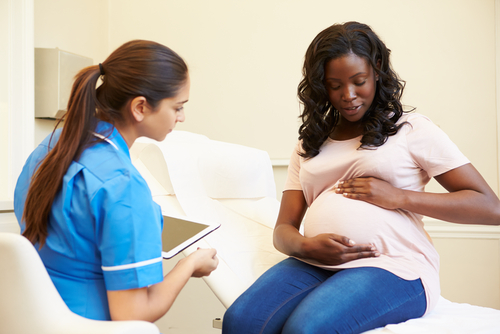Fertility Not Affected by LOPD, But Pregnancy Worsens Symptoms, Small Study Finds
Written by |

Fertility in women is not affected by late-onset Pompe disease (LOPD), but pregnancy may initiate or worsen symptoms, a small study found.
The study, “Pregnancy Outcomes in Late Onset Pompe Disease,” was published in the journal Life.
LOPD is typically diagnosed years after the first symptoms emerge. The disorder is characterized by progressive muscular weakness, particularly in the lower body, and respiratory and motor difficulties. These symptoms may be induced or exacerbated by physiological stressors, such as pregnancy.
The primary treatment for LOPD is an enzyme replacement therapy (ERT) called Lumizyme (alglucosidase alfa), marketed by Sanofi Genzyme. The therapy has been approved by the U.S. Food and Drug Administration for the treatment of LOPD since 2010 but its effects on pregnancy have not been extensively studied. In addition, the risk of infertility or pregnancy complications that may be associated with LOPD require research.
To address these knowledge gaps, scientists at the Lysosomal and Rare Disorders Research and Treatment Center, in Virginia, launched a study funded by Sanofi Genzyme. A total of 25 women with LOPD self-reported their reproductive history, ERT use, and symptoms in a questionnaire.
Most participants were diagnosed after their final pregnancy, according to the data. The mean age at diagnosis was 42.1 years (range 24–60), nearly a decade after the mean age of disease onset at 33.8 years. Only three patients were on ERT before or during their pregnancy.
Symptoms varied widely among participants, and included muscle weakness, fatigue, shortness of breath, and difficulty climbing stairs. Over half of the patients used devices such as canes, walkers, and wheelchairs to assist with movement.
Three women reported infertility, with one using assisted reproductive technology to conceive. In total, 23 patients reported a total of 50 (86.2%) live births, including one pair of twins, two (3.4%) stillbirths, and seven (12.07%) miscarriages during the first trimester.
Further, 80.8% of the deliveries were vaginal and 19.2% were by Cesarean section. With the exception of anesthesia complications and the rate of stillbirths, which were higher in LOPD patients, the modes of delivery, frequency of preterm delivery, and complication rates were not significantly different than in the general population — as assessed in the CDC’s National Vital Statistics Report.
Back pain was the most common disease-related symptom during pregnancy. Five patients reported postpartum fatigue.
Of the three women on ERT, two conceived while on the treatment and one started ERT during pregnancy. The women who conceived while receiving ERT experienced worsening of weakness during pregnancy, but those symptoms improved postpartum. No adverse events associated with ERT were found during pregnancy in these three women.
The small group of patients is a limitation of the study, the team said. Other limitations include the reliance on self-reported data, and the fact that patients were all women who had been pregnant.
“Further data is needed to better analyze the effects of ERT on pregnancy outcomes and the effects of pregnancy on Pompe disease progression,” the researchers wrote.
“However, the incidence (1 in 57,000 live births) of LOPD may preclude an imminent large prospective multicenter trial to assess the effects of alglucosidase alfa [Lumizyme] and pregnancy in female patients with Pompe disease, and small studies such as this one may aid to develop practice guidelines,” they wrote.





